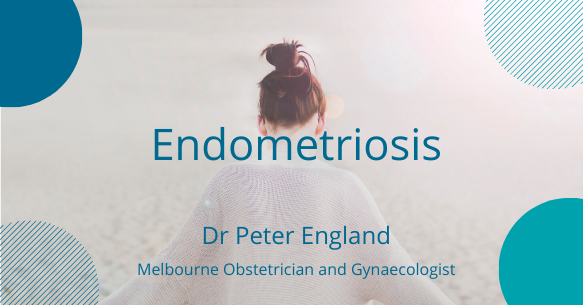
Endometriosis is a condition where tissue similar to the endometrium (the lining of the uterus) grows outside the uterus, usually in the female pelvis.
The tissue is stimulated to grow each month by the hormones of the normal menstrual cycle. At the end of the month, when the woman’s period occurs, the endometriosis also bleeds inside the pelvis. Because of this, pain and inflammation often occur. Sometimes over the years, damage occurs to pelvic organs and the bowel and bladder. This leads to a variety of symptoms and possible complications.
Where can endometriosis grow?
The most common sites are on the outside of the uterus, the ovaries, the fallopian tubes and the walls of the pelvis. Patches can grow on the outside of the bladder and the rectum. On the sides of the pelvis run the ureters: the “drainpipe” from the kidney to the bladder, which can also be affected. Occasionally endometriosis can affect other sites as well.
What are the symptoms of endometriosis?
The classic triad is painful periods (dysmenorrhoea), painful sex (dyspareunia) and infertility. However, some women have little in the way of pain and yet have significant endometriosis, and vice versa. Some women notice pain in the rectum when using their bowels, others some non-specific bladder symptoms.
How is endometriosis diagnosed?
After you tell me your history, and I perform an examination, I will generally proceed to Ultrasound. Once we have all the information, if endometriosis is suspected you will need a laparoscopy. While some cases of endometriosis show up on ultrasound, the majority don’t as the patches, plaques and nodules that form in the pelvis are only visible at laparoscopy.
How is endometriosis treated?
A day surgical procedure called a laparoscopy is where the condition is both diagnosed and initially treated. The endometriosis deposits can be either removed or cauterised to render the tissue inactive. This also allows staging of the condition as mild, moderate or severe. This then helps predict the behaviour of the condition in the coming years, risks for fertility, and options for ongoing treatment. Relief is apparent following surgical excision, but the condition tends to relapse in around 50% of patients over time.
Ongoing treatments can include the OCP, Mirena IUD, or other specific therapies including Progestagens and GnRH analogues to induce temporary menopause for severe cases.
What if all the above fails to control the symptoms?
If all conservative therapies fail, and you have completed your family, the consideration and discussion of hysterectomy can occur.
Other recent posts:
- Free Genetic Testing Before Your Pregnancy
- What are the Reasons and Causes of Miscarriage
- Reasons for Bleeding in Early Pregnancy
- Medications to treat PCOS
- PCOS and Fertility
Please call us to discuss your personal health
Author: Dr Peter England, Obstetrician and Gynaecologist.
Read more about Dr Peter England
